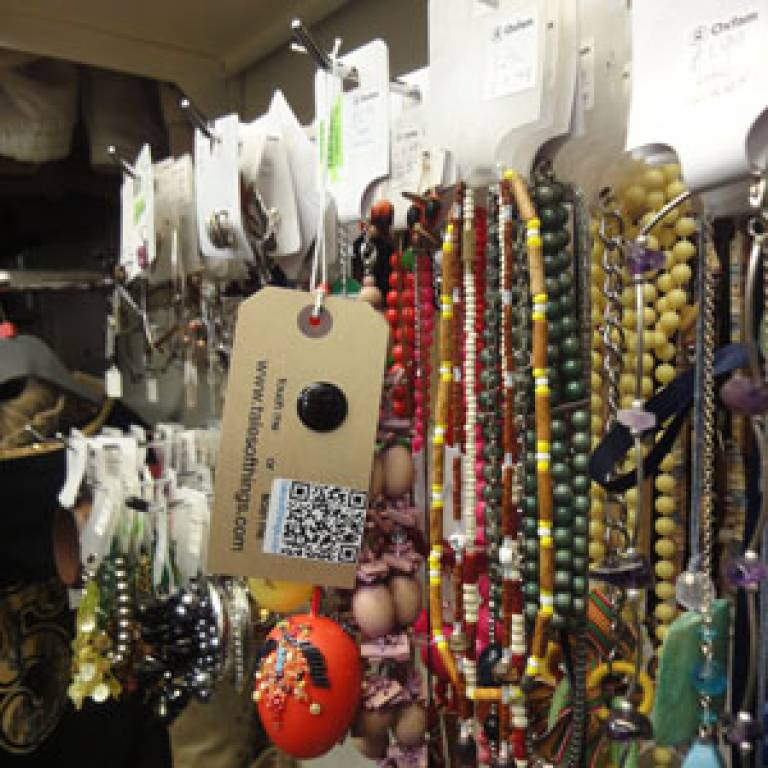'Facebook of things' includes Annie Lennox's dress and a bus stop in Norway
14 September 2011
Using QR code technology, academics in the UK have created a system that allows everything in the world to be connected to an online profile.

Information such as geographical location, stories from previous owners, tweets from the object itself and video clips can now come together to form a social network for objects.
Presented today at the British Science Festival in Bradford, the tales of things project already includes over 6,000 items. These include the dress Annie Lennox wore to Nelson Mandela's birthday, a bus stop in Norway, BBC Broadcasting House and a Tasmanian devil in the Grant Museum of Zoology in London.
The work is leading towards a 'Geography of Everything' where everything is connected to the internet, changing the significance of second hand objects, retail structures and the way we view the world around us.
To test the project academics from UCL (University College London) and four other academic partners recently collaborated with Oxfam, tagging clothes with QR codes so that the stories of their owners could be recorded along with their geographical location. Apart from significantly increasing the charity shop's profits, the project effectively transformed the shop space into a social museum where items of clothing could 'talk' about their history.
Dr Andy Hudson-Smith, Director of the Centre for Advanced Spatial Analysis at UCL, who leads the team creating the technology behind the tales of things project, said: "In 20 years time it may well be possible to enter a shop where each object is able to offer up its own history - what sort of person owned the object before, where they got it from and what memories are associated with it.
"Annie Lennox's dress will be linked to a video of her description of her wearing at Nelson Mandela's birthday, as well as me explaining our project at this science festival."
Objects are tagged using RFID (Radio-frequency identification) tags and QR Codes, which are currently present in products such as the Oyster Card and on consumer goods. Using smart phones people can easily scan the codes and add their own information on that object. For example, a bus stop in Norway has been tagged with tales of things technology. When somebody scans its code the bus stop automatically tweets, tells you when the next bus is due, and gives you the opportunity to leave a message or a video clip.
Dr Hudson-Smith added: "The digital world is hidden to our eyes yet social networks, communications and messages are buzzing all around us. Even everyday objects are connecting to the Internet and interacting.
"We are revealing the hidden city networks of twitter and explore how QRCodes can be used to create a kind of future Antiques Roadshow where, via the Internet of Things, every object can talk and tell a story."
The project is part of a research group run by TOTeM (Tales of Things and Electronic Memory) which is a collaboration between five UK Higher Education institutions (Edinburgh College of Art, Brunel University, University College London, University Of Dundee and University of Salford).
Media contact: Clare Ryan
Links:
 Close
Close

